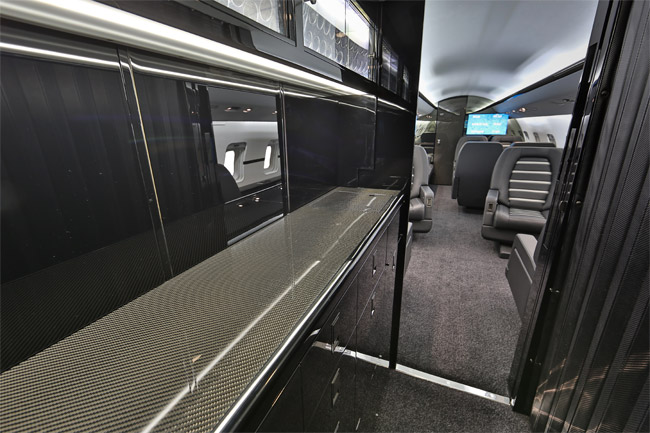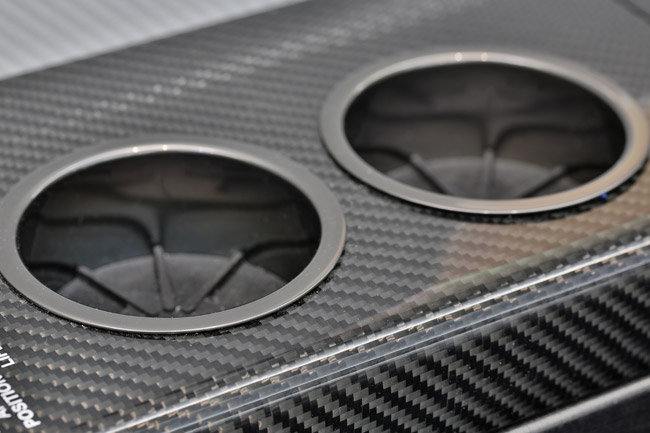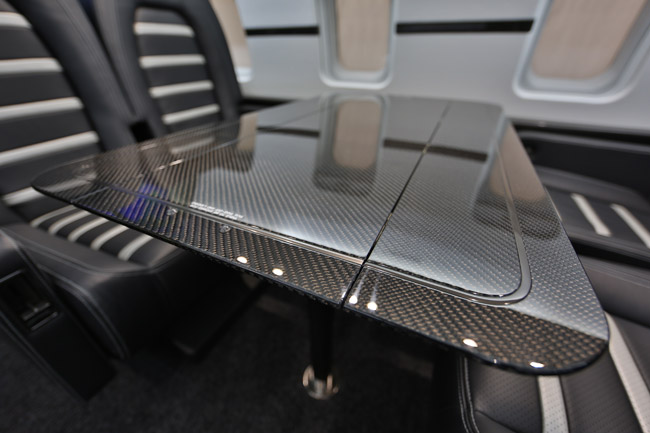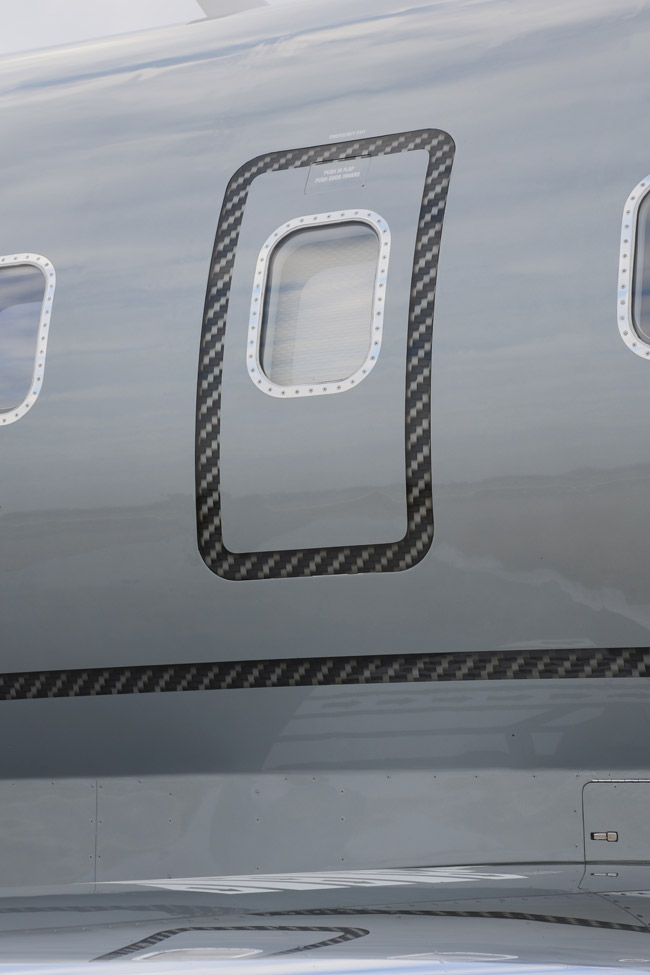
Here at Carbon Fiber Gear, we talk a lot about the form and functionality of carbon fiber – how it excites engineers and improves their products. Today though, thanks to the efforts of West Star Aviation, a company that specializes in aircraft upgrades, repairs, services and construction, we’re going to slow it down, take three steps back, place our hands on our hips and marvel at the more attractive attributes of this modern material.
After stumbling upon a recent press release about how West Star Aviation has integrated carbon fiber into five different aircraft refurbishment projects in the last year, we reached out to Debi Cunningham, VP of Marketing and Interior Design, and asked how the company got into the game of crafting tables, side-ledges, floor ducts, hand rails and the like out of our all-time favorite composite.

“Carbon fiber, we believe, sparked our customer’s attention when they started seeing it in the high-end car industry,†she replied. “We did several interiors that had both seats fashioned from the high-end car industry along with the carbon fiber.â€
As Debi tells it, it all started as a simple request. And from there?
“We used carbon fiber on the first aircraft because the customer requested it. After that, when we spoke with other customers, we talked about carbon fiber and the color scheme, the black and grey combinations, and once we showed them that, it’s what they wanted.â€

What culminated was a lavatory countertop specifically designed for a Gulfstream 200, floor ducts, handrails, tables and side-ledges for a pair of Challenger 604s and a full galley for a Falcon 900.
“The use of carbon fiber in cabin design has continued to grow in popularity as it gives a unique, hi-tech, and more modern look than the traditional veneer options.â€
Veneer options that, depending on the wood used, could take as many as 10 separate coats to obtain the high-gloss finish that is essential to most high-end productions. (Carbon fiber doesn’t need nearly as many coats to obtain the same results.)

Also, not only is West Star Aviation using the incredible composite to construct items on the interior of the aircraft but, in an act that fully exemplifies carbon fiber’s ability to make mouths gape and eyes pop at its picturesque properties, WSA has also imitated its black-and-grey crosshatching pattern in a paint that’s been applied to a tail and a set of winglets.

So where does it end?
“I’m not sure of the life of carbon fiber,†Debi Cunningham goes on, referring to its possible use in future projects. “It has to be done in specific areas and amounts or it could be overwhelming.â€
But, as most of us CF fanatics are already aware of, once you go grey-and-black, it’s hard to go back.
“We would like to see carbon fiber bulkheads or radio pack panels,†she admits.
We would too, Debi. We would too. Let’s hope it happens.

For more on West Star Aviation and their other carbon fiber-inspired projects, you can visit their website here.